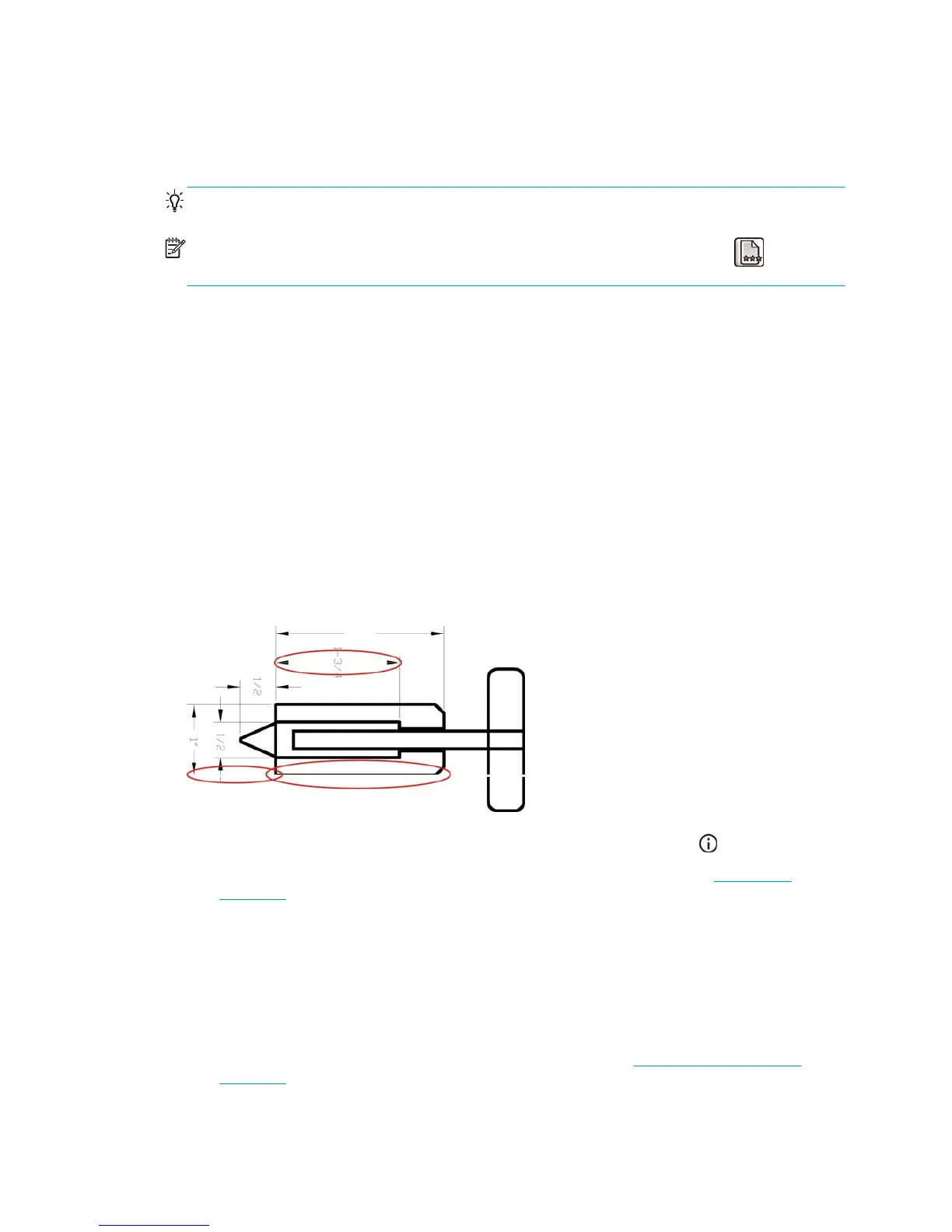Optimization suggested actions
This option suggests a series of recommended actions to improve print quality, based on the results of
internal checks. These actions may include reseating a printhead, changing paper to run a specific calibration,
cleaning some printer component, etc. Execute them in the proposed order.
TIP: Use this option if you want to save time by acting directly on the causes of your problem, or if your
problem persists after the automatic Optimize print quality process.
NOTE: This option can also be selected from the front panel. From the main menu, select , then
Optimization suggested actions.
Most-common issues resolution
This option is designed to help you resolve some of the most common print-quality issues that users
encounter in large-format printing:
●
Dark or light horizontal lines across the image (banding)
●
Graininess
●
Poor line quality
●
Inaccurate colors
In the first window, select the print-quality issue that you are experiencing and click Next.
A list of suggestions for corrective action appears along with help to guide you through each action.
Lines are too thick, too thin or missing
1. Check that the paper type you have loaded corresponds to the paper type selected in the front panel
and in your software. To check on the front panel, use the View information key
.
2. Check that you are using appropriate print-quality settings for your purposes (see
Print options
on page 75). Select the custom print-quality options in the driver dialog, and try turning on the
Maximum detail option (if available). You may wish to reprint your job at this point in case the problem
has been solved.
3. If the resolution of your image is greater than the printing resolution, you may notice a loss of line
quality. If you are using the HP-GL/2 and HP RTL driver for Windows, you can find the Max. Application
Resolution option in the driver dialog's Advanced tab, under Document Options > Printer Features. If
you change this option, you may wish to reprint your job at this point in case the problem has been
solved.
4. If lines are too thin or missing, print the Image Diagnostics Print. See
The Image Diagnostics Print
on page 59.
ENWW Lines are too thick, too thin or missing 143

